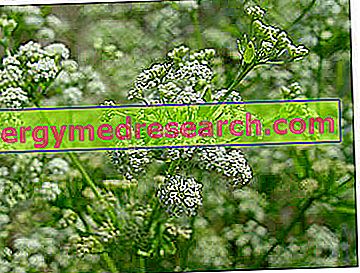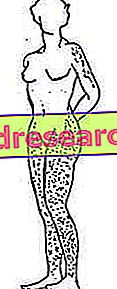King of the garden
A typical symbol of home gardens, celery is a widespread biennial plant, both cultivated and spontaneous. Celery is widely used in the kitchen, due to its particular aroma and ability to "hide" unpleasant tastes and smells, but is also consumed raw, in pinzimonio and in salads. But that's not all: celery is even used in phytotherapy, herbalism and cosmetics.
In the course of the discussion we will deepen the general characteristics of celery, its botanical peculiarities, nutritional characteristics and different food and therapeutic uses.
Generality and tradition

Celery has always been used also as a diuretic, digestive and natural remedy against cramps.
Botanical characters
In botanical terms, celery is Apium graveolens, a typically biennial herbaceous species but often cultivated in an annual cycle, belonging to the Umbelliferae family. Celery grows spontaneously in grassy and marshy areas, and can even reach heights of 80-90 centimeters, depending on the variety considered.
The plant has pinnate or bipinnate leaves, divided into three ovate-lobed segments; the leaves are rhombic and the margin is typically serrated or serrated.
The ribs of the leaves, wisely made white and fleshy through an appropriate culture, have a delicate and pleasant taste that lends itself well to the most varied culinary preparations.
Celery flowers, white or whitish, are grouped in umbrellas composed of 6-12 rays; the flower peduncles are quite robust.
The root of celery is a taproot: in some species, the root is large and round, and presents an edible white pulp, with a flavor comparable to that of celery costs. In this case, the root is better known as celery-rapa: it is the rapaceum variety, also known as celery from Verona (an entire in-depth article will be dedicated to celery root).
The fruits of celery (called seeds) are small diachenes (mostly exploited for herbal purposes), with a color ranging from green to brown.
Celery: variety
The varietal panorama of celery is quite broad and varied: three of the most important varieties cannot be forgotten the celery from the coast ( dulce variety), of which the petiole of the leaves is used, fleshy and developed. In the dulce variety, the root is rather thin and not very developed, and is further classified on the basis of the color of the coasts (green, white or golden coasts).
Another very important variety of celery is the so-called cut celery, with its characteristic strong and intense aroma: the leaves are used in this variety.
Last but not least, celeriac: as already mentioned in the previous paragraph, it is a very popular variety in Northern Italy: Verona celery is cultivated for its roundish and well developed root, which can be consumed both raw and cooked.
Nutritional analysis
Celery has a very low calorie content: in 100 grams there are only 20 kcal. Water constitutes over 88% in weight, while the remaining 12% is divided between carbohydrates, proteins, fibers and fats (very few). Furthermore, celery is a source of mineral salts, such as iron, manganese and potassium, as well as being rich in antioxidants (vitamins A, C and E).
Essential oil

Health properties
In the previous section we described the chemical composition of celery essential oil: scientific research has demonstrated its medicinal potential, and phytotherapy has learned to use them to create products that are effective in alleviating certain disorders.
Initially, the antihyperlipidic property of celery, attributed to the 3-n-butylphthalide ftalide molecule, was publicized: however, recently, although this capacity has been ascertained in any case, it has been concluded that in all probability the molecule in question is not responsible for it. . It seems that celery acts as an excellent natural remedy to counteract the deposit of excess lipids, but the cause of the action is the entire aqueous extract, not a single molecule.
However, 3-n-butylphthalide is implicated in the hypocholesterolemic and antihypertensive action of celery.
Celery probably plays a role - albeit marginal - at the level of the central nervous system: it is believed, in fact, that the consumption of celery acts as a mild antidepressant and anxiolytic, but this hypothesis still leaves a shadow of perplexity among researchers.
Being very rich in minerals, celery also serves as an excellent natural remineralizer.
Known from the past the diuretic, aperitif and digestive properties of the plant. Finally, celery juice is also used in the treatment of rheumatism, lung diseases, kidney stones and liver failure.
Food uses
More than for the medicinal properties, celery is grown in home gardens for its starring role in the kitchen: celery is in fact the main ingredient, along with onion and carrot, for the preparation of sauté; at the same time, it is a vegetable that certainly cannot be lacking in the preparation of meat broth, nor for cooking roasts and soups.
Raw, celery is suitable for making pinzimonio and salads.
Celery in brief, summary on celery »



